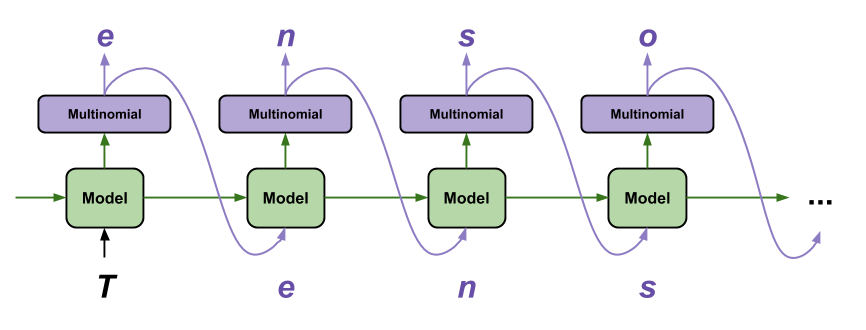I don't think there's any difference between making predictions when you use or not teacher forcing during training. So, let me describe one way of doing that.
During testing, as you noticed, you don't know the ground-truth labels, so the only way of predicting a sequence is to feed into the model the predictions for the previous time-steps.
So, let's say that your model is denoted by $f$, which attempts to approximate the language model $p(x_t \mid x_{1:t-1})$, a conditional probability distribution over characters.
To perform inference, you first need to provide the initial character of the sequence, usually, a special character, like $\langle \text{start} \rangle$, so your model predicts the first real character of the sequence as follows $$f([\langle \text{start} \rangle]) = \hat{x}_1.$$ Afterward, you feed to it $\hat{x}_1$, in order to produce the next character, i.e. $$f([\langle \text{start}\rangle, \hat{x}_1]) = \hat{x}_2,$$ and so on, until the model $f$ produces another special character that denotes the end of the sentence $\langle \text{end}\rangle$.
Now, in practice, rather than all the previously predicted characters, you may just feed the character $x_{t-1}$ to predict $x_t$, and, at the same time, pass the previous last state of the RNN, so something like $$f (\hat{x}_{t-1}, h_{t-1}) = \hat{x}_t.$$
The following diagram illustrates the concept.

Here the first char is $T$ and the model predicts that the next char is $e$. Then we pass $e$ and the previous state of the model to the model to predict $n$, and so on.
Here you have a TensorFlow example that generates text with an RNN, uses teacher forcing, and then performs inference in the way I described (of course, there are other details, like using a temperature).

